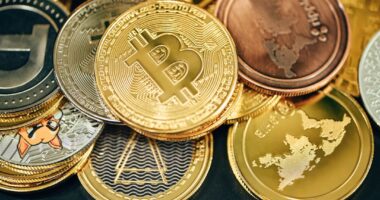Non-fungible tokens, commonly referred to as NFTs, represent a revolutionary shift in how we perceive ownership and value in the digital realm. Unlike cryptocurrencies such as Bitcoin or Ethereum, which are fungible and can be exchanged on a one-to-one basis, NFTs are unique digital assets that cannot be replicated. Each NFT is stored on a blockchain, a decentralized ledger that ensures the authenticity and provenance of the asset.
This uniqueness is what gives NFTs their value; they can represent anything from digital art and music to virtual real estate and collectibles. The underlying technology of NFTs is primarily based on the Ethereum blockchain, although other blockchains like Binance Smart Chain and Flow have also begun to support them. The creation of an NFT involves minting, a process where a digital file is transformed into a token on the blockchain.
This token contains metadata that describes the asset, including its ownership history and any associated rights. As a result, NFTs have opened up new avenues for creators to monetize their work while providing buyers with a sense of ownership that was previously unattainable in the digital space.
Key Takeaways
- NFTs, or non-fungible tokens, are unique digital assets that represent ownership or proof of authenticity of a specific item or piece of content on the blockchain.
- NFTs have gained popularity in the digital art world, allowing artists to sell and monetize their digital creations as one-of-a-kind collectibles.
- The music industry has also embraced NFTs, with artists releasing exclusive music, artwork, and experiences as NFTs to engage with fans and create new revenue streams.
- NFTs are making waves in the gaming world, offering players the opportunity to own and trade in-game assets, characters, and virtual land as unique digital collectibles.
- Sports collectibles have found a new home in the NFT space, with athletes and sports organizations creating and selling digital memorabilia and experiences to fans through NFTs.
- NFTs have expanded into virtual real estate, allowing users to buy, sell, and trade virtual land and properties in digital worlds and metaverses.
- The environmental impact of NFTs, particularly in terms of energy consumption and carbon footprint, has raised concerns about the sustainability of the technology.
- The future of NFTs holds potential for further innovation and integration across various industries, as well as the need for addressing environmental concerns and developing sustainable practices.
The Rise of NFTs in the Digital Art World
Democratization of the Art Market
This shift has led to a democratization of the art market, where artists can bypass traditional galleries and auction houses. The sale of Beeple’s digital artwork titled “Everydays: The First 5000 Days” for $69 million at a Christie’s auction in March 2021 is a notable example of this phenomenon. This sale not only catapulted Beeple into the limelight but also validated the NFT market as a legitimate space for high-value transactions.
NFT Market Growth and Validation
The success of such sales has inspired countless artists to explore NFTs as a viable revenue stream, leading to an explosion of creativity and innovation within the digital art community. As a result, the NFT market has experienced rapid growth, with platforms like OpenSea, Rarible, and Foundation emerging as popular marketplaces for artists to showcase and sell their work.
Impact on the Digital Art Community
The rise of NFTs has had a profound impact on the digital art community, enabling artists to monetize their work in ways that were previously unimaginable. This has led to a surge in creativity and innovation, as artists are now able to focus on producing high-quality work without worrying about the financial constraints of traditional art markets. The future of digital art looks promising, with NFTs poised to continue playing a major role in shaping the industry.
NFTs in the Music Industry

The music industry is undergoing a transformation as artists increasingly turn to NFTs to connect with fans and monetize their work. Traditionally, musicians have relied on album sales, streaming royalties, and live performances for income. However, the rise of NFTs has introduced new revenue streams that allow artists to sell exclusive content directly to their audience.
This can include anything from unreleased tracks and concert tickets to unique experiences like virtual meet-and-greets. A prime example of this trend is the musician Grimes, who sold a collection of NFT artworks and music for nearly $6 million in early 2021. By leveraging NFTs, Grimes was able to offer her fans exclusive access to her creative process and unique content that would not be available through traditional channels.
Similarly, Kings of Leon made headlines by releasing their album “When You See Yourself” as an NFT, which included special perks such as front-row concert tickets and exclusive audiovisual experiences. This shift not only empowers artists but also fosters a deeper connection between musicians and their fans, as collectors can own a piece of their favorite artist’s work in a way that was previously impossible.
NFTs in the Gaming World
| Game Title | NFT Integration | NFT Marketplace |
|---|---|---|
| Decentraland | Yes | Decentraland Marketplace |
| CryptoKitties | Yes | CryptoKitties Marketplace |
| The Sandbox | Yes | The Sandbox Marketplace |
The gaming industry has embraced NFTs as a means to enhance player engagement and create new economic models within virtual environments. In traditional gaming, players invest time and money into acquiring in-game assets, but these items are often locked within the game itself and cannot be transferred or sold outside of it. NFTs change this dynamic by allowing players to truly own their in-game items, which can be bought, sold, or traded on secondary markets.
Games like Axie Infinity have pioneered this concept by integrating NFTs into their gameplay mechanics. Players can breed, battle, and trade creatures called Axies, each represented by a unique NFT. This has created an entire economy around the game, where players can earn real money by participating in battles or selling their Axies on marketplaces.
The success of Axie Infinity has inspired other developers to explore similar models, leading to a surge in blockchain-based games that incorporate NFTs as core elements of gameplay. Moreover, NFTs have also enabled game developers to create limited edition items or skins that can be sold directly to players. This not only provides an additional revenue stream for developers but also enhances the gaming experience by offering players unique collectibles that can be showcased within their virtual worlds.
As the gaming landscape continues to evolve, the integration of NFTs is likely to play a significant role in shaping how players interact with games and each other.
NFTs and Sports Collectibles
The world of sports collectibles has been transformed by the introduction of NFTs, allowing fans to own unique digital memorabilia associated with their favorite athletes and teams. Traditionally, sports collectibles such as trading cards or autographed merchandise have been physical items that can be difficult to authenticate and maintain. NFTs provide a solution by offering verifiable proof of ownership and authenticity through blockchain technology.
One prominent example is NBA Top Shot, a platform that allows fans to buy, sell, and trade officially licensed NBA collectible highlights known as “moments.” Each moment is represented as an NFT, complete with metadata detailing its rarity and historical significance. The platform has seen tremendous success since its launch, with some moments selling for hundreds of thousands of dollars. This new approach not only appeals to collectors but also engages younger audiences who are more accustomed to digital interactions.
Additionally, athletes themselves are getting involved in the NFT space by creating their own digital collectibles. For instance, NFL star Tom Brady launched his own NFT platform called Autograph, where fans can purchase exclusive digital memorabilia featuring his likeness and achievements. This trend reflects a broader movement within sports where athletes are leveraging their personal brands to create unique experiences for fans while capitalizing on the growing interest in NFTs.
NFTs and Virtual Real Estate

Ownership and Development Opportunities
In Decentraland, for instance, users can purchase land parcels using the platform’s native cryptocurrency (MANA) and develop them into various projects, ranging from art galleries to virtual casinos. The ability to own virtual land has attracted investors and creators, leading to significant sales transactions similar to those found in traditional real estate markets. Notably, a virtual plot of land in Decentraland sold for over $1 million in March 2021, highlighting the potential value of digital real estate.
Business Opportunities in the Metaverse
Virtual real estate also presents unique opportunities for businesses and brands seeking to establish a presence in the metaverse. Companies can create immersive experiences that engage users in innovative ways while promoting their products or services. As more people spend time in virtual environments for socializing, gaming, or work-related activities, the demand for virtual real estate is likely to grow exponentially.
The Future of Virtual Real Estate
As the concept of virtual real estate continues to evolve, it is likely to have a significant impact on the way we interact with digital environments. With the potential for exponential growth, virtual real estate is poised to become a lucrative market, offering new opportunities for investors, creators, and businesses alike.
The Environmental Impact of NFTs
While NFTs have opened up exciting new possibilities across various industries, they have also raised concerns regarding their environmental impact. The majority of NFTs are minted on blockchains that utilize proof-of-work consensus mechanisms—most notably Ethereum—which require significant computational power and energy consumption.
For instance, a single transaction on Ethereum can consume as much energy as an average household uses in several days. As the popularity of NFTs surged in 2021, so did concerns about their carbon emissions. Various studies have estimated that the energy consumption associated with minting NFTs could contribute significantly to global carbon emissions if left unchecked.
In response to these concerns, some platforms are exploring more sustainable alternatives. Ethereum is transitioning to a proof-of-stake model with Ethereum 2.0, which promises to drastically reduce energy consumption by eliminating the need for energy-intensive mining processes.
As awareness grows about environmental issues related to blockchain technology, it will be crucial for the NFT community to adopt practices that minimize their ecological impact.
The Future of NFTs
The future of NFTs appears promising as they continue to evolve across various sectors beyond art and collectibles. As technology advances and more industries recognize the potential applications of NFTs, we may see innovative use cases emerge that further integrate these digital assets into everyday life. For instance, sectors such as education could leverage NFTs for credential verification or course completion certificates that are tamper-proof and easily transferable.
Moreover, as brands increasingly explore ways to engage consumers through immersive experiences in virtual environments, we may witness a surge in branded NFT campaigns that blend marketing with entertainment. Companies could create limited-edition digital products or experiences tied to major events or product launches that resonate with consumers on a deeper level. As regulatory frameworks around cryptocurrencies and digital assets continue to develop globally, clarity will be essential for fostering trust among users and investors alike.
The establishment of clear guidelines could pave the way for mainstream adoption of NFTs across various industries while ensuring consumer protection. In conclusion, while challenges remain—such as environmental concerns and regulatory uncertainties—the potential for NFTs to reshape our understanding of ownership and value in the digital age is undeniable. As creators continue to innovate and explore new applications for this technology, it will be fascinating to observe how NFTs evolve over time and what new opportunities they will unlock for individuals and businesses alike.
Recently, there has been a lot of buzz surrounding NFTs in the cryptocurrency world. One related article that caught my attention was from ETH News, discussing the rise of NFTs and their impact on the art market. The article delves into how NFTs are revolutionizing the way artists can monetize their work and connect with collectors in a digital landscape. It’s fascinating to see how this technology is reshaping the traditional art world and opening up new opportunities for creators.
FAQs
What is NFT?
NFT stands for non-fungible token, which is a digital asset that represents ownership or proof of authenticity of a unique item or piece of content, such as artwork, music, videos, and other digital files.
How do NFTs work?
NFTs are created and stored on a blockchain, which is a decentralized digital ledger. Each NFT has a unique digital signature that makes it distinct from other tokens, and its ownership and transaction history are recorded on the blockchain.
Why are NFTs popular lately?
NFTs have gained popularity due to their potential to provide a new way for artists, creators, and collectors to monetize and trade digital assets. They also offer a way to prove ownership and authenticity of digital content in a digital world.
How are NFTs bought and sold?
NFTs are typically bought and sold on online marketplaces that support blockchain technology, such as Ethereum. Users can use cryptocurrency to purchase NFTs, and the ownership transfer is recorded on the blockchain.
What are the criticisms of NFTs?
Critics of NFTs raise concerns about their environmental impact due to the energy consumption of blockchain technology. There are also concerns about the speculative nature of NFT investments and the potential for copyright infringement.





